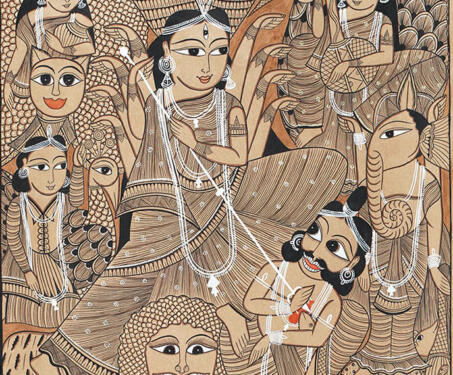

Goddess of the People – Ma Durga comes to Kolkata
Let’s trace the tremendous journey of Goddess Durga as she emerged from the mists of time and sprung into the limelight to capture the imagination of Calcutta, Bengal and the rest of the country

Let’s trace the tremendous journey of Goddess Durga as she emerged from the mists of time and sprung into the limelight to capture the imagination of Calcutta, Bengal and the rest of the country
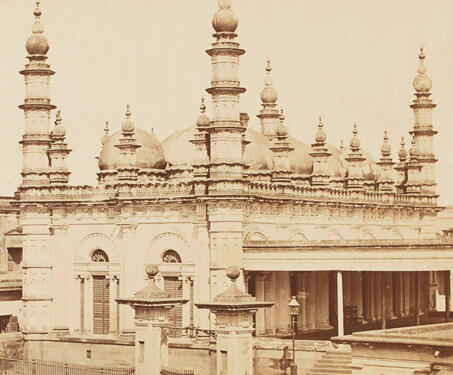
This photograph shows the Tipu Sultan Mosque in Calcutta. For several years in the 18th century, Tipu Sultan fought the East India Company’s formidable imperial policies with the help of his French alliance. He died in 1799, during the fourth and final Anglo-Mysore War that resulted in the fall of Seringapatam. After defeat in 1798,… Read more »
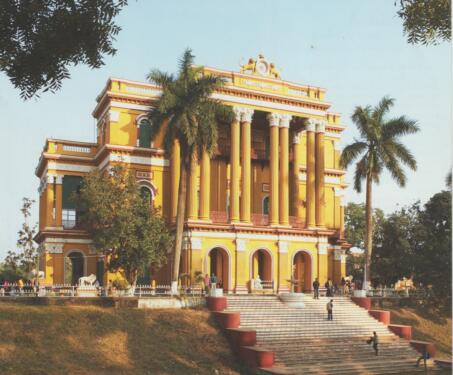
A conversation with author and historian Rosie Llewellyn-Jones about a city whose beauty decayed and grandeur faded even as history forgot its name
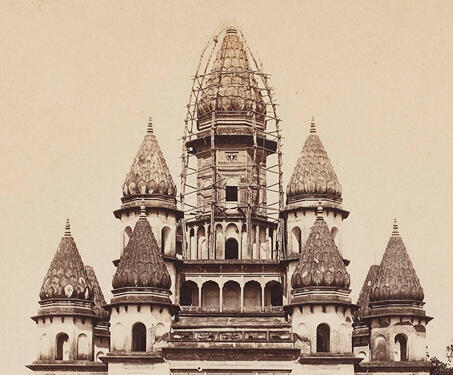
This picture shows the temple of Bansberia, also known as the Hangseswari temple, in the Hugli district of West Bengal. In 1792, Raja Nrisinhadeb Rai Mahasai of Bansberia came to Varanasi for retirement. Here, he approved a significant amount of money to raise a temple dedicated to Goddess Hamsesvari, an avatar of Goddess Kali, in Bansberia. He… Read more »
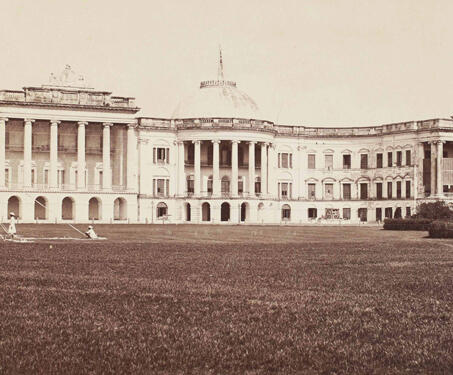
This is a photograph shows the Government House in Calcutta which became the Raj Bhavan of West Bengal after Independence. The Government House was built between 1799 and 1803 as the official residence of the Governor of Fort William, the 1st Marquess Wellesley, and remained the residence of the British Governors-General till 1911. The building’s… Read more »
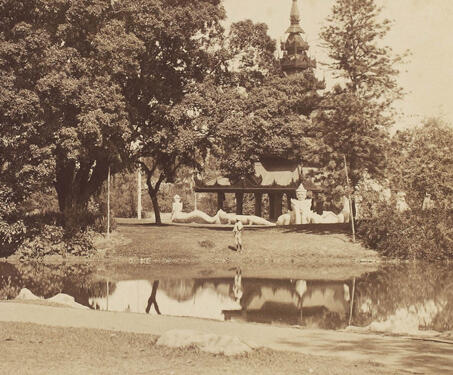
This picture shows a view of Kolkata’s Eden gardens with a pagoda in the background and a bridge over a stream. Overlooking the Hooghly River, Eden Gardens was formally opened to the public in 1840. It was Lord Auckland, the Governor-General (1836-42), and his sisters who conceived the idea of the gardens and assigned the… Read more »

This photo shows a view of the Bandstand and the Burmese Pagoda in Eden Gardens from across Strand Road in Kolkata. It was Lord Auckland, the Governor-General (1836-42), and his sisters who conceived the idea of Eden Gardens around the northern periphery of Fort William and assigned the responsibility of planning it to Civil Architect… Read more »
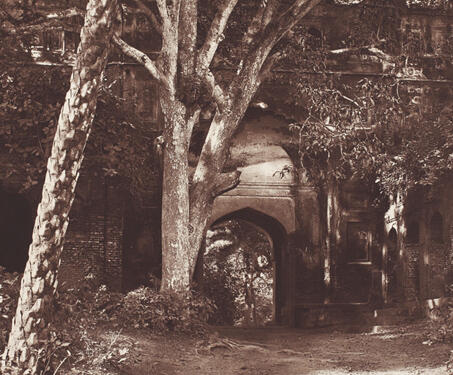
This gate is said to have been built in 1655 by Shah Shuja, and was noted by photographer John Henry Ravenshaw as being relatively more modern in architectural style than the rest of Gaur. The city itself was long deserted by then, its decline rooted in the sacking of Gaur by Sher Shah in 1539.… Read more »
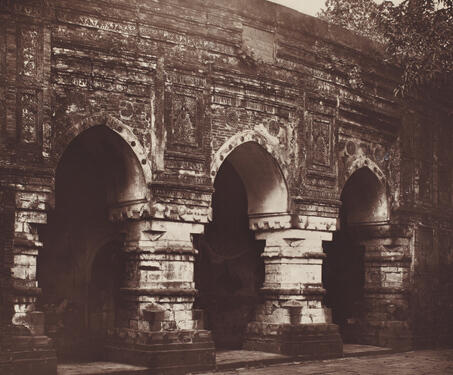
Built by Sultan Nusrat Shah in 1513 to house a stone representation of the footprint of the Prophet Mohammed, the Qadam Rasul Mosque is a one-domed square building located within the fort enclosure of Gaur. The relic, believed to have been originally brought by a saint from Arabia, was housed in Pandua before being brought… Read more »
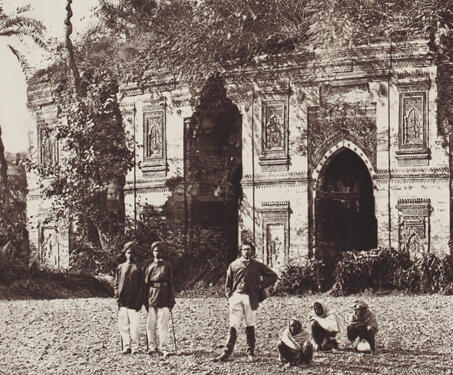
Tantipara, which means weavers quarters, is said to have been locally known as a mosque for Gaur’s weavers, a community essential to the city’s economy because of its location in a muslin-producing area. A brick building of uniform red and ornamented walls, the mosque is considered to have been erected in 1480. This photograph was… Read more »
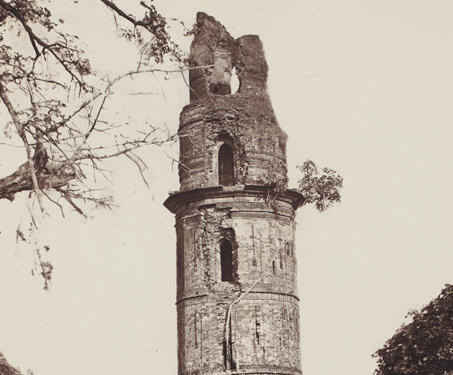
Firoz Minar is a five-storey-high structure estimated to have been built in Gaur during the late 15th century by Saifuddin Firuz Shah, the most revered of the Habshi rulers of Bengal. Much like the Qutub Minar, to which it is often compared, the structure was built to be a victory tower. Firuz Shah, known as… Read more »
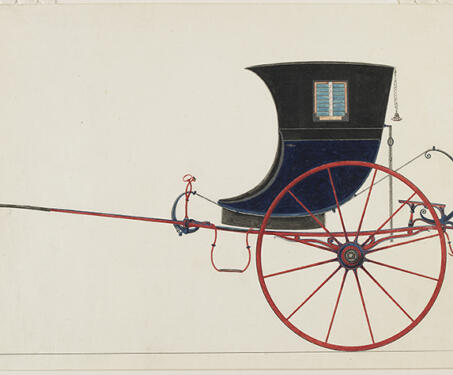
An interview with Dr Xavier Bray of the Wallace Collection to understand how Bengal came to play an important role in the evolution of the striking Company School paintings
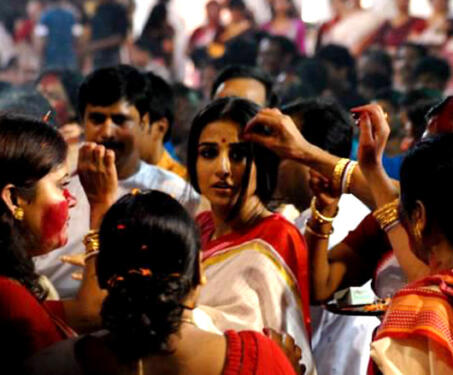
A land of memory and vision. A city of joy and heartbreak. A capsule of what was and what could have been. The cinemascape of Calcutta shows us all this and more
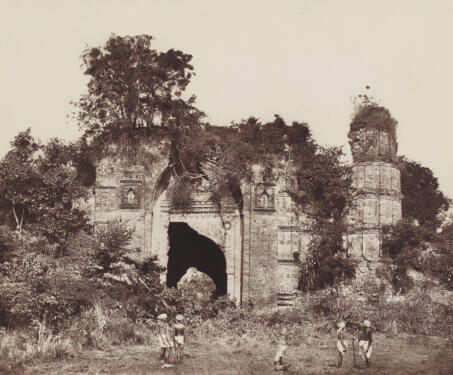
Built of small red bricks and with traces of extravagant ornamentation, the structure in this photograph was once the principal entrance gate to the Fort of Gaur from the north. Estimated to have been constructed in the early 15th century, the gateway is also known as Salami Darwaza, likely because salutes were fired from adjacent… Read more »
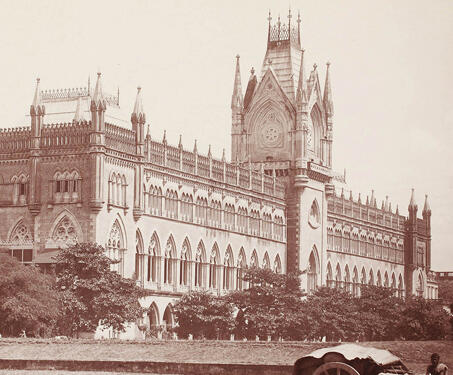
This picture shows the Calcutta High Court building on West Esplanade Row, as seen from across the street. In 1726 the East India Company created the Mayor’s Court, which was a court of record, to settle civil disputes. Consequently, English criminal law was also adopted and quarterly meetings were held by the Governor and five… Read more »
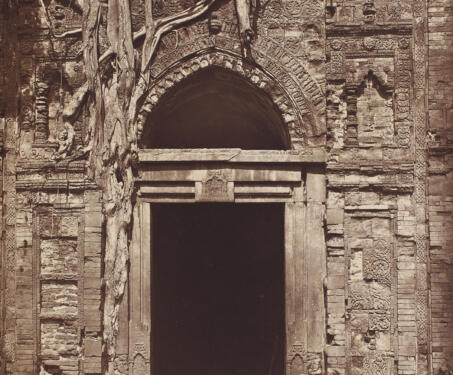
Presumably named Ekhlakhi because it is said to have cost one lakh rupees, this mausoleum in Gaur bears three tombs — considered to be those of Jalaluddin Muhammad Shah, his wife and his son. Shah was the son of Raja Ganesha, a Hindu ruler of Bengal who came to power in 1415, marking the end… Read more »
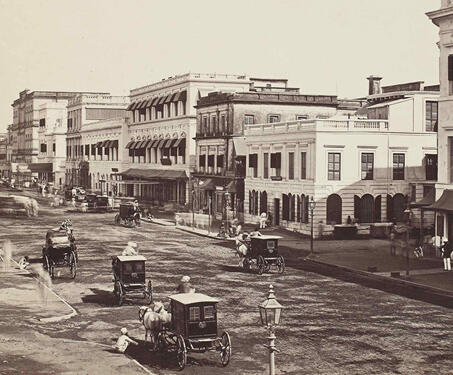
This is a photo of the Old Court House Street in Calcutta. This street lies on the eastern side of the Dalhousie Square and in this view you can see St. Andrew’s Church on the north corner of Old Court House Street and Lal Bazaar Street. This photograph is taken by Samuel Bourne in the… Read more »
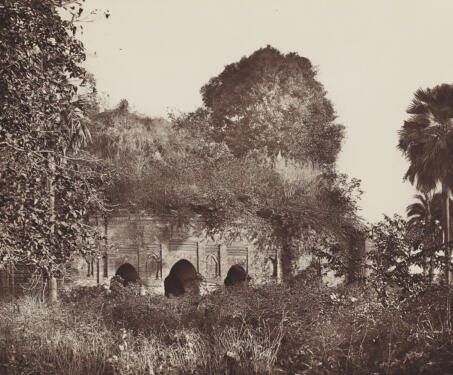
The Lattan Masjid or Painted Mosque of Gaur, pictured here, was once covered entirely with enameled brickwork in colours of green, yellow, blue and white. It is considered to have been built by Sultan Yusuf Shah, among the last of the Ilyas Shah rulers of Bengal in 1475, as per an inscription found in the… Read more »
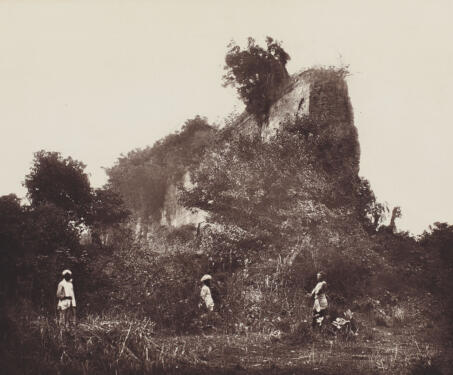
Named Baiz gazi possibly because it measured 22 Bengali gaz (yards) in height, these are the remains of the old palace enclosure located within the Fort of Gaur. The wall is said to have measured 700 yards in length from north to south and 230-300 yard in breadth, encircling the royal residence. The ancient city… Read more »
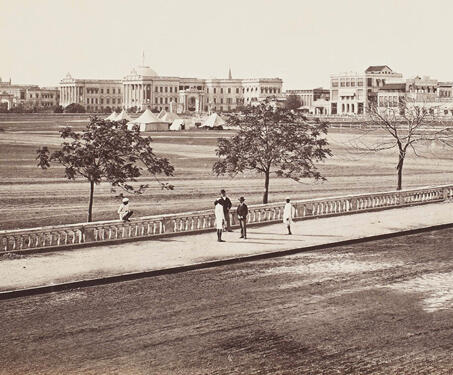
This photograph shows the view from the north end of Chowringhee Road, beside the carriage stand, looking north-west across the Dharmatala Tank, towards the façades of the houses along Esplanade Row. The Government House is on the extreme left. The flat-fronted building with a verandah, located behind the premises of William Coish & Co is… Read more »